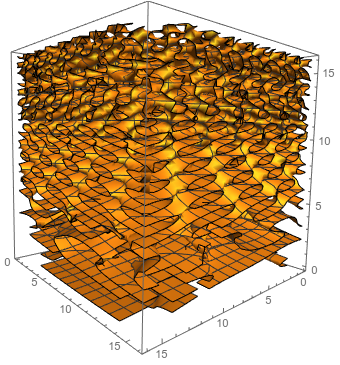I'm trying to figure out how to change the period over time (z-direction) in my 3D plot, which is a gyroid, in a way similar to a color thickness function, but I would like to do it continuosly on the function.
ContourPlot3D[
Cos[x] Sin[y] + Cos[y] Sin[z] + Cos[z] Sin[x],
{x, -0, 16}, {y, -0, 16}, {z, -0, 16},
Contours -> {0},
PlotPoints -> 6,
ViewPoint -> {1, 1, 1}]
The above is the code I use. I would like to add a function so I can change the gyroid repetition frequence over time.
Hope you can help me!


